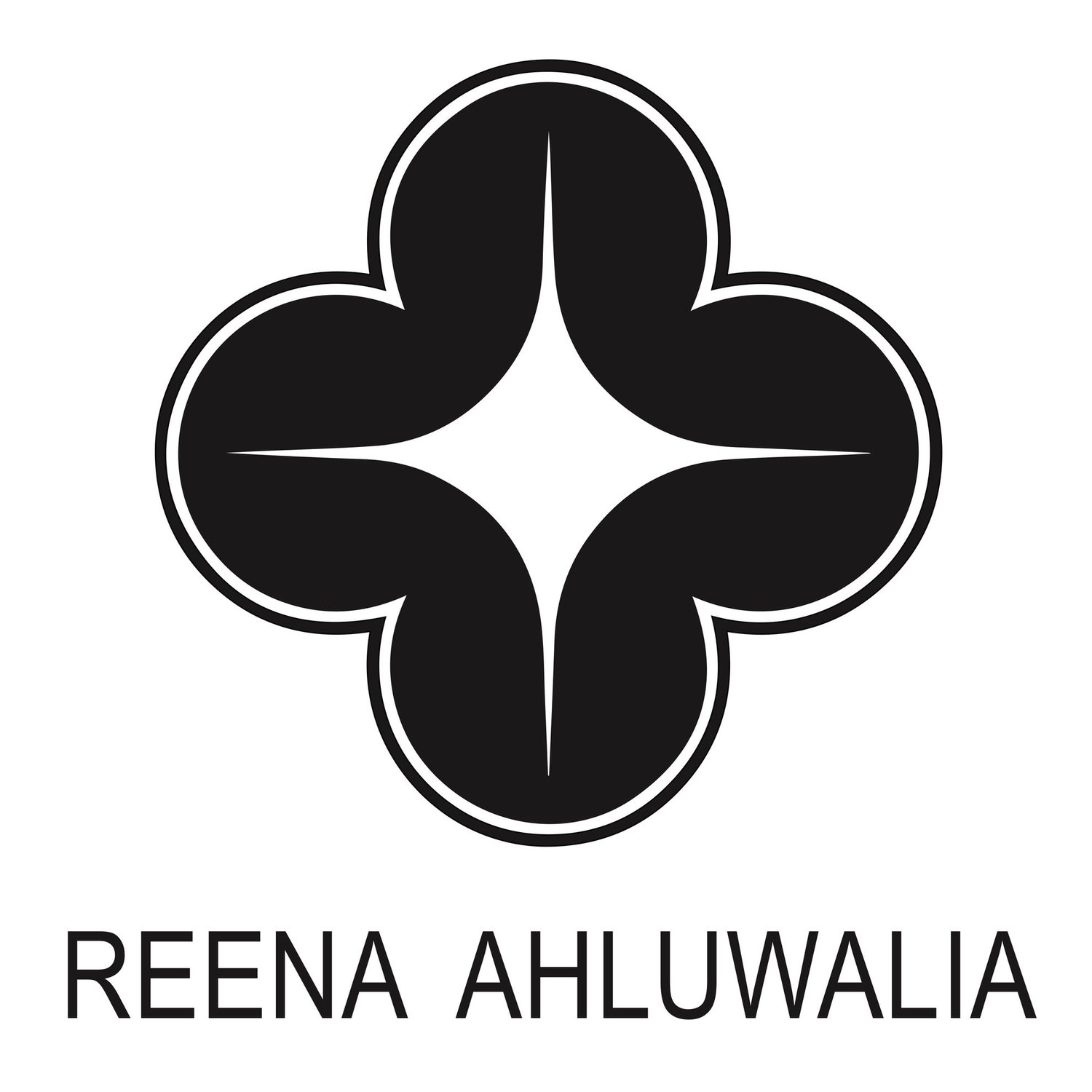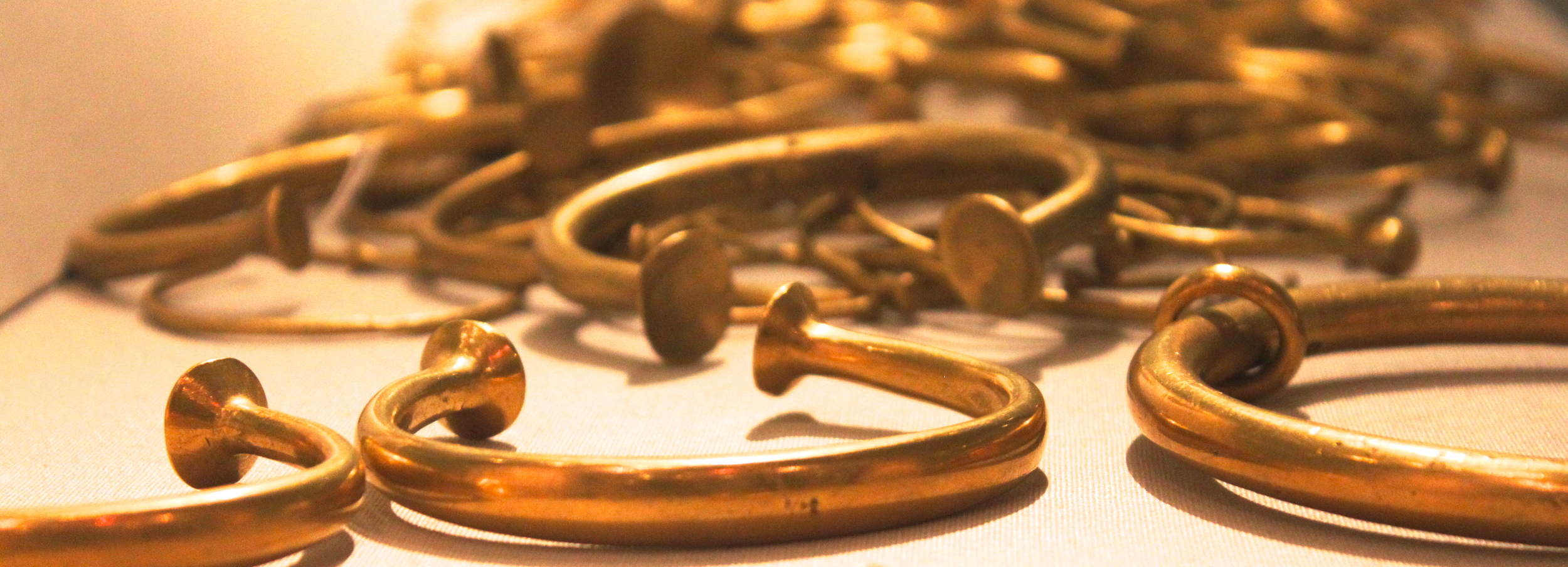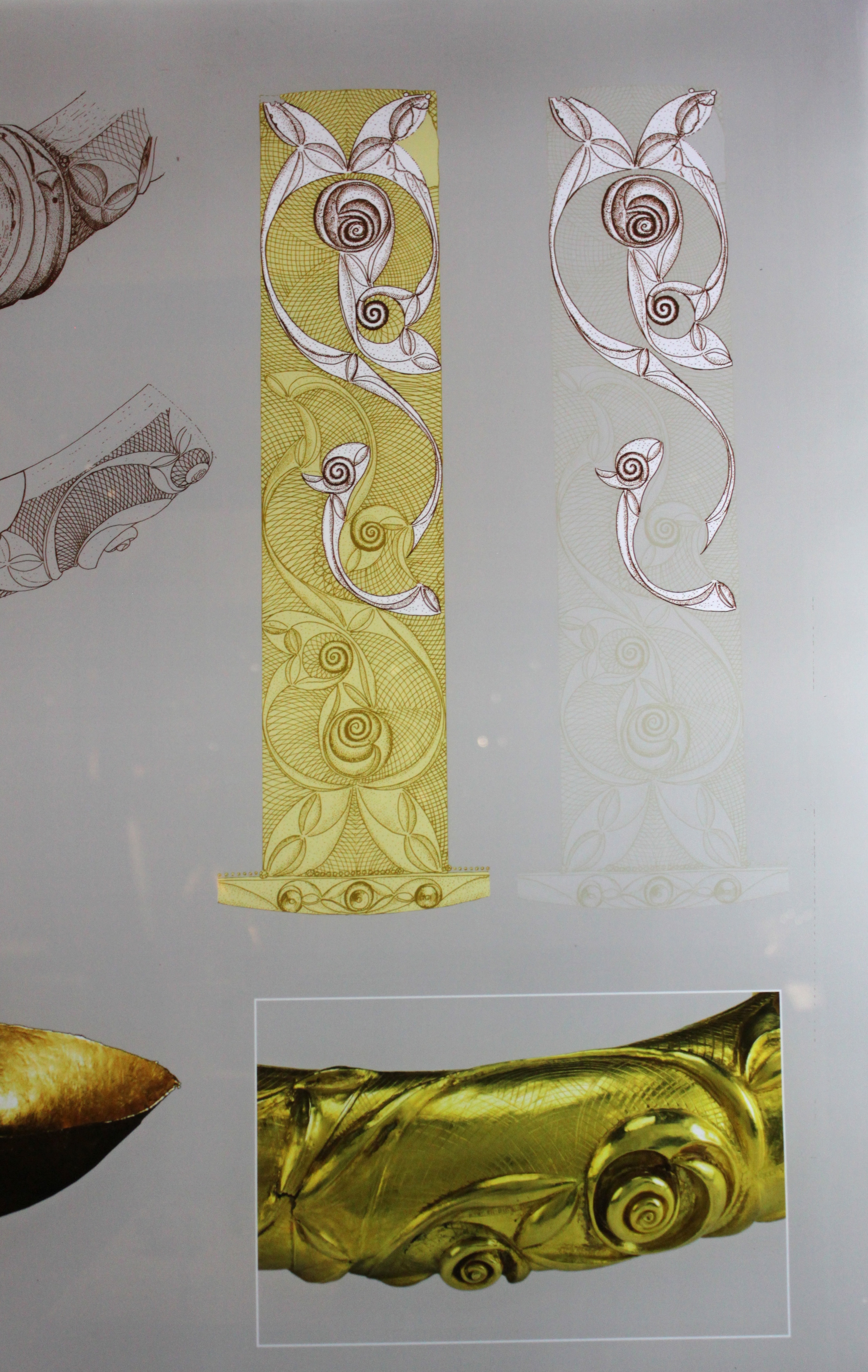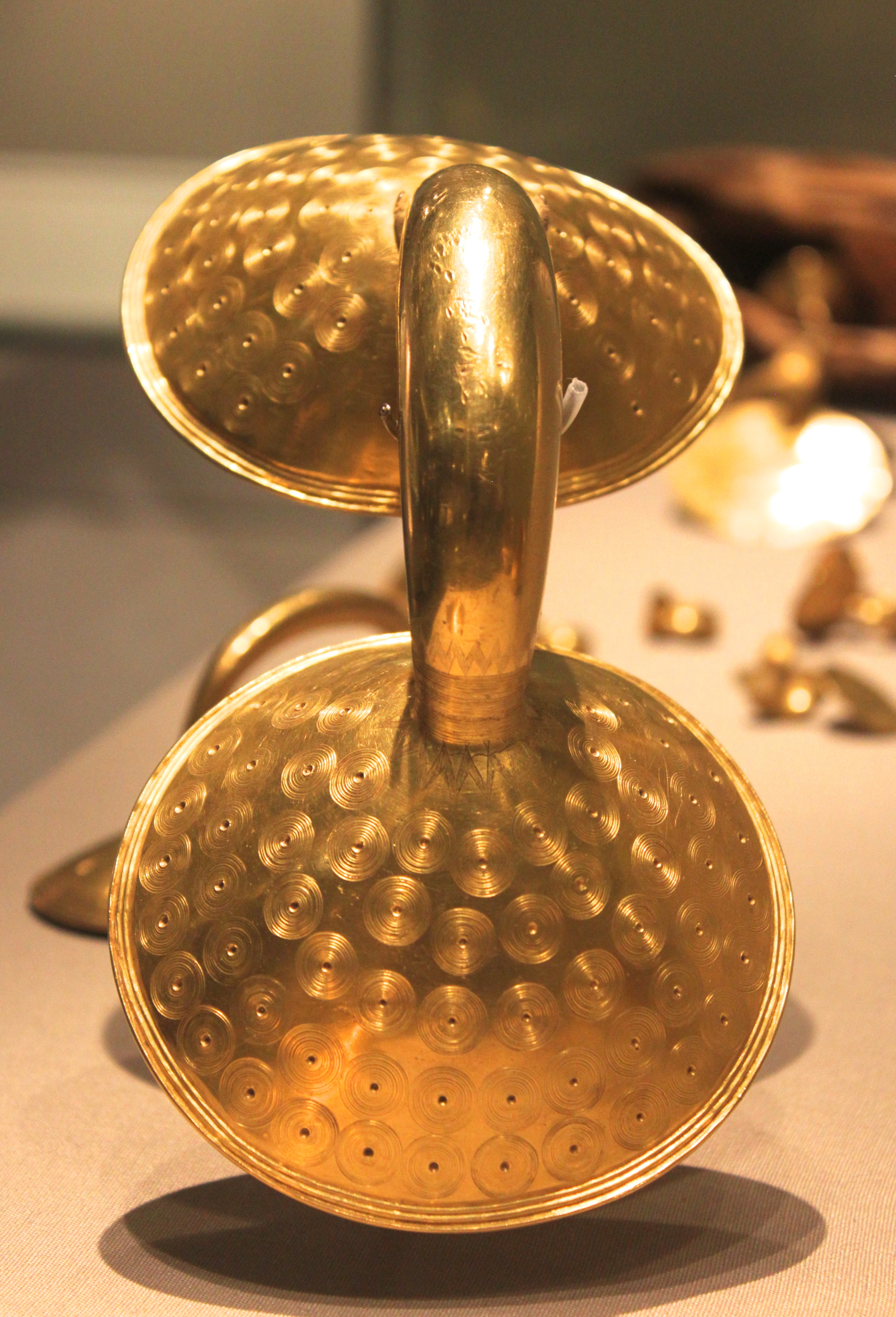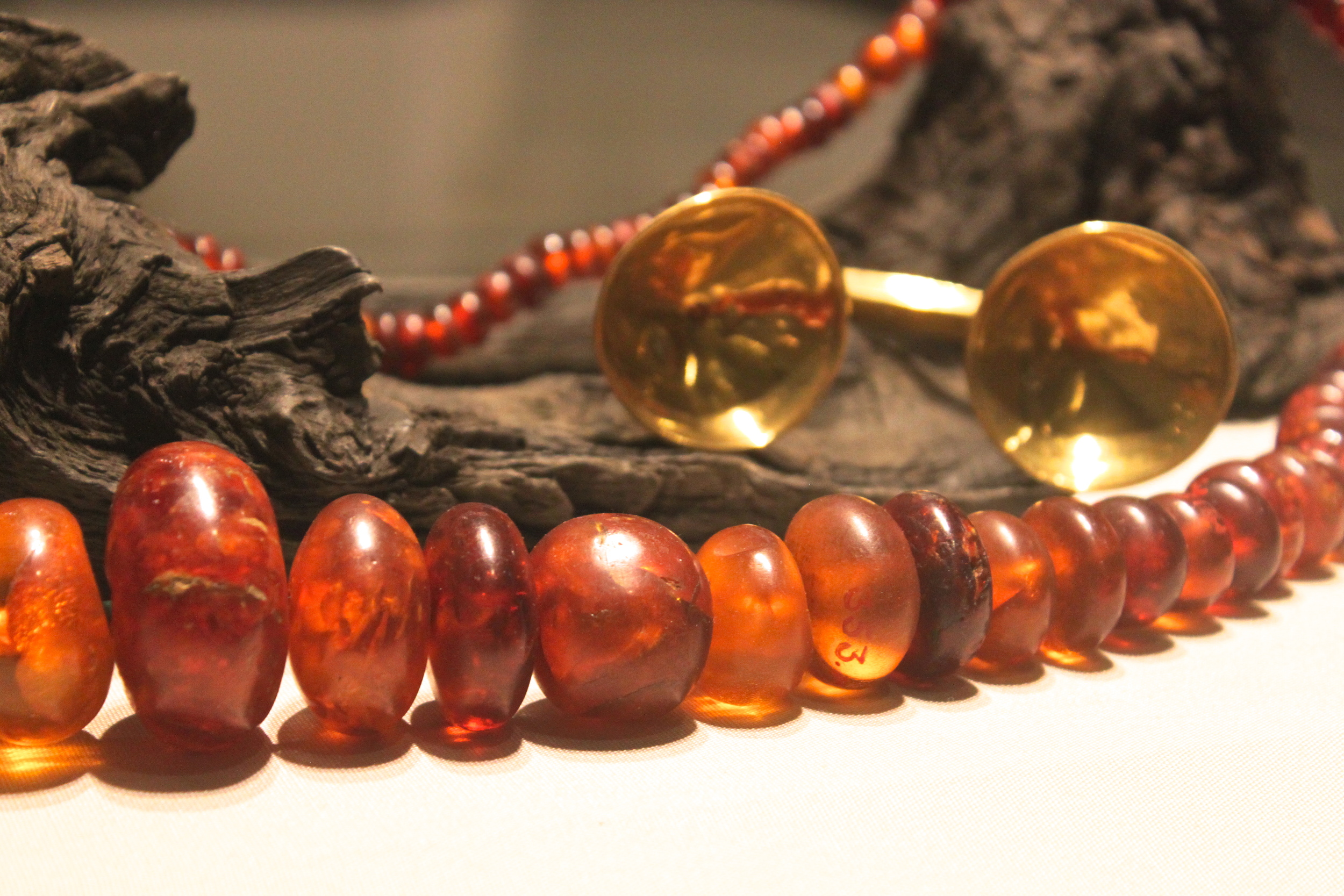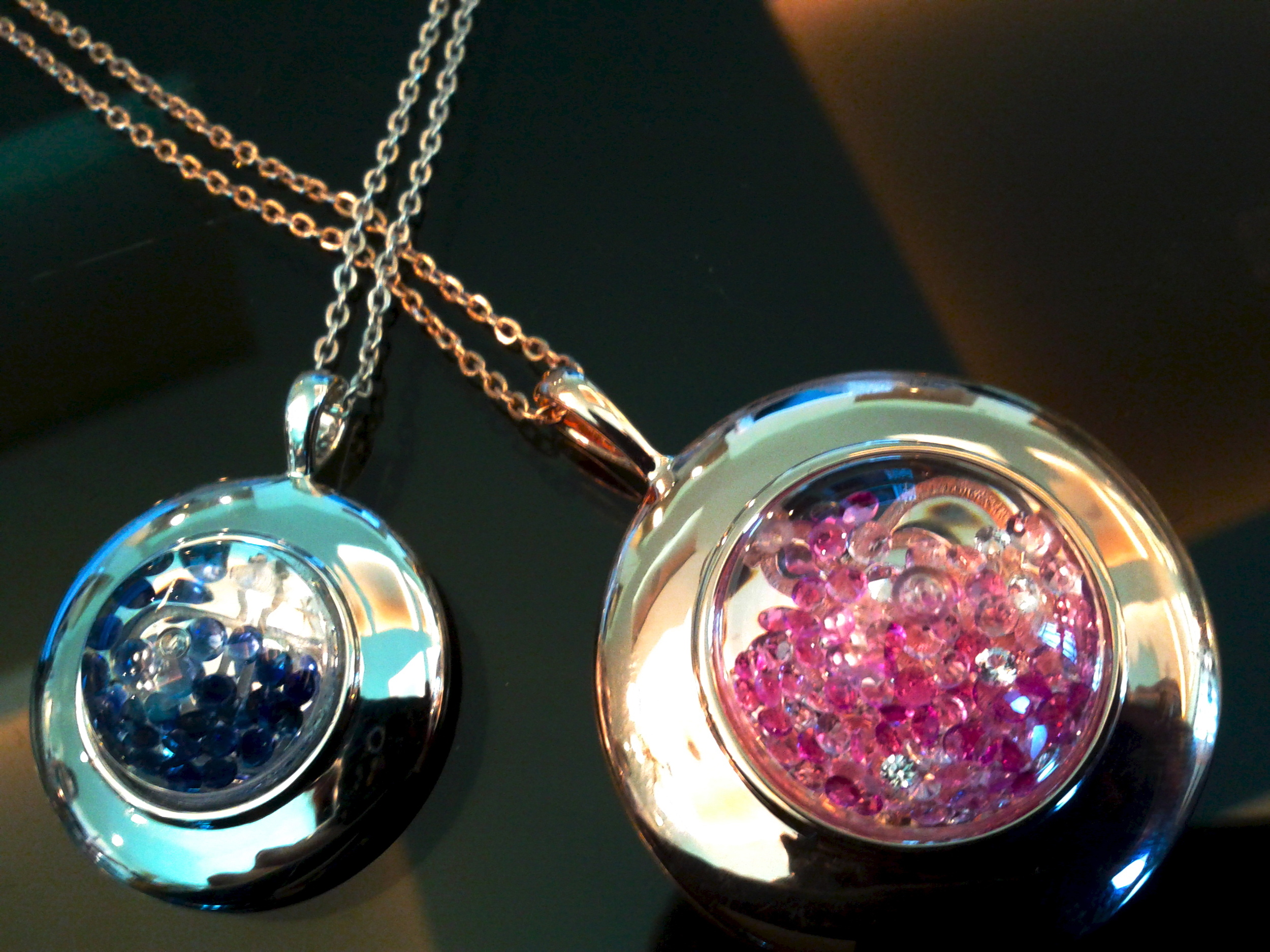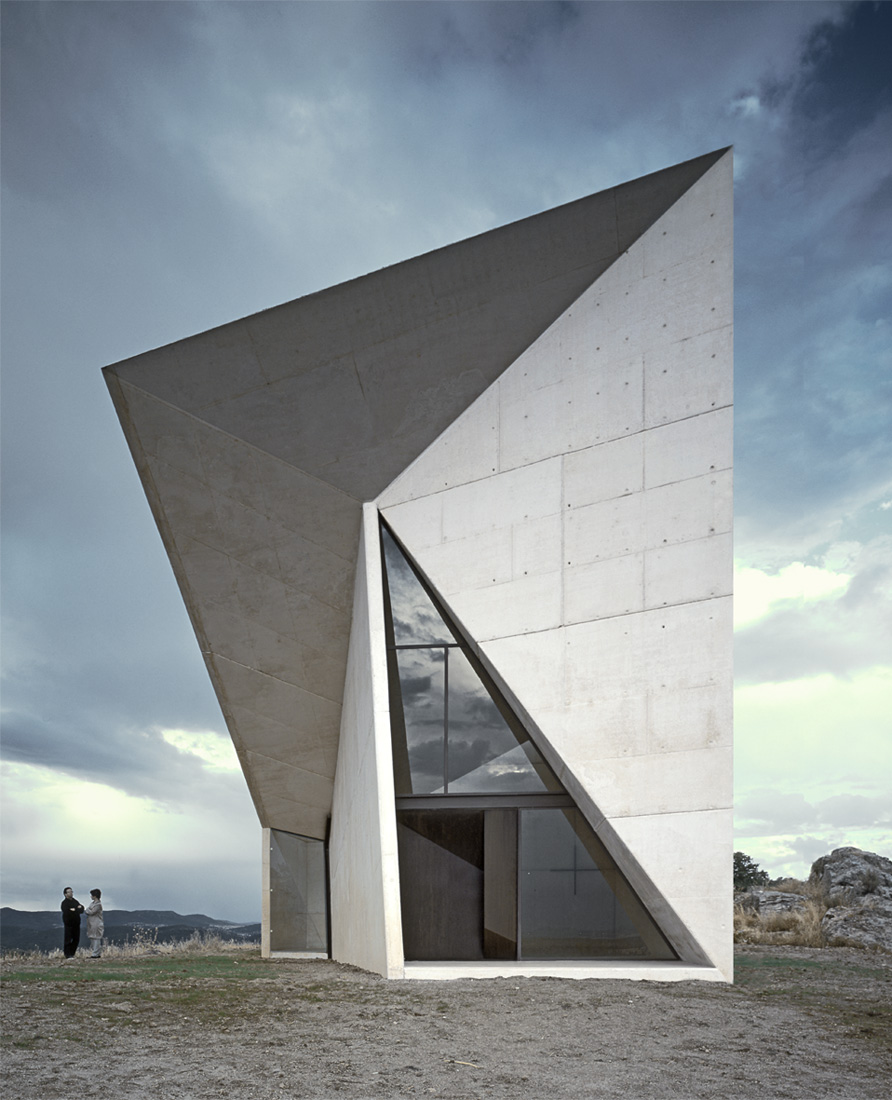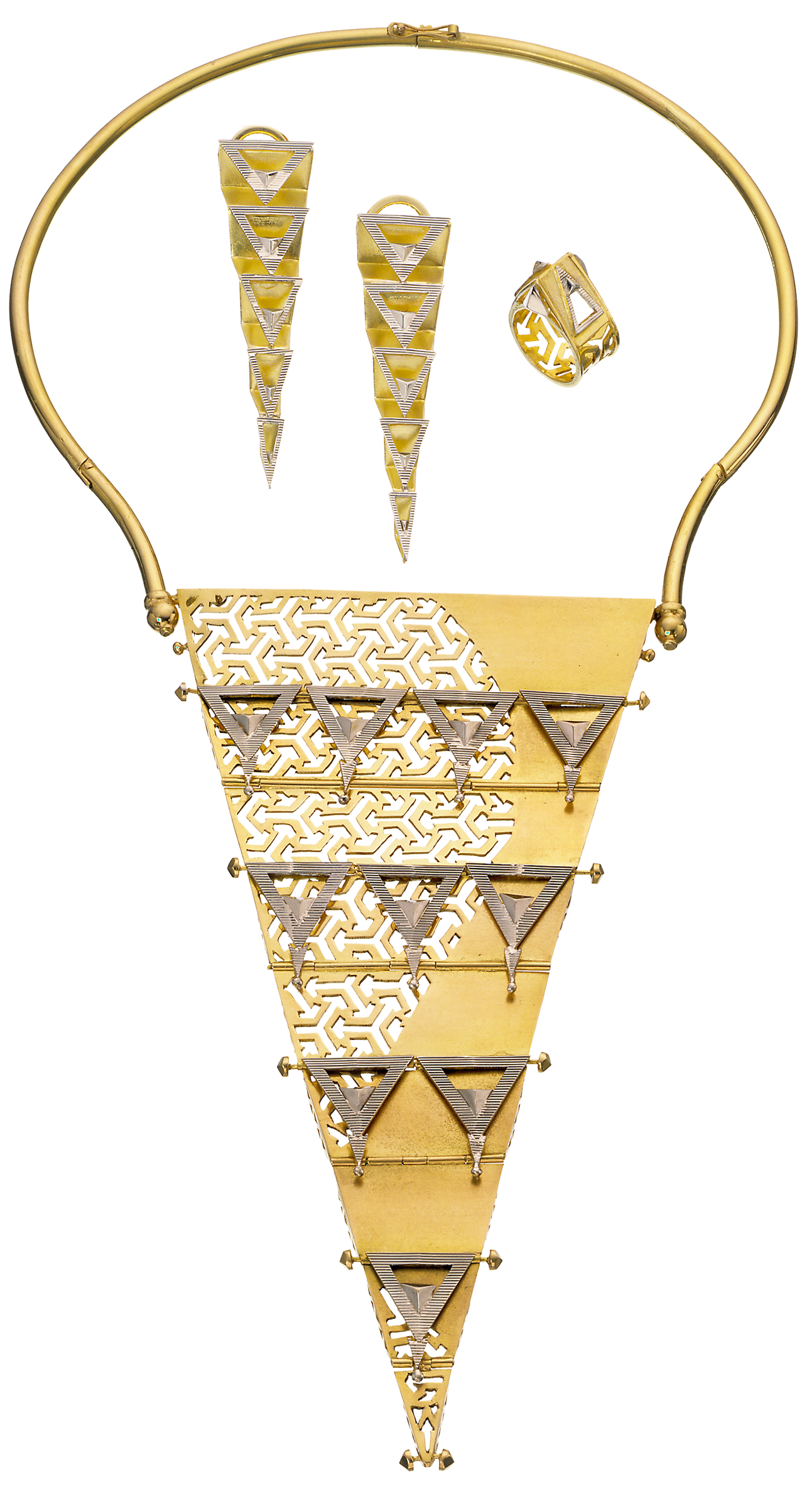May the rocks in your field turn to gold. -- Irish blessing
Glorious gold! It dazzled me on my recent visit to Dublin, Ireland. I was awestruck! The gold-work history is fascinating and so are the forms and textures. Hope you enjoy this blog post as much as I enjoyed learning about the history of gold in Ireland!
The National Museum of Ireland's collection of prehistoric gold-work, ranging in date between 2200 BC and 500 BC, is one of the largest and most important in western Europe. Most are pieces of jewellery but the precise function of some is unknown.
During the Early Bronze Age the principal products were made from sheet gold, and include sundiscs and the crescentic gold collars called lunulae. Around 1200 BC new gold working techniques were developed. During this time a great variety of torcs were made by twisting bars or strips of gold.
Styles changed again around 900 BC and the goldwork of this period can be divided into two main types. Solid objects such as bracelets and dress-fasteners contrast dramatically with large sheet gold collars and delicate ear-spools.
Although gold has been found in Ireland at a number of locations, particularly in Co. Wicklow and Co. Tyrone, it has not yet been possible to identify the ancient sources where gold was found. The sites most likely to have been recognized and exploited by prehistoric people are alluvial deposits from rivers and streams. This ‘placer’ gold is weathered out from parent rock and can be recovered using simple techniques such as panning.
In Europe, the earliest evidence for gold-working dates to the fifth millennium BC. By the end of the third millennium gold-working had become well established in Ireland and Britain together with a highly productive copper and bronze working industry. While we do not know precisely how the late Neolithic people of Ireland became familiar with metalworking, it is clear that it was introduced as a fully developed technique. Essential metalworking skills must have been introduced by people already experienced at all levels of production, from ore identification and recovery through all stages of the manufacturing process.
Source: National Museum of Ireland - Archaeology
Photographs shown below are taken by Reena Ahluwalia at the National Museum of Ireland, Archaeology, unless otherwise stated.
